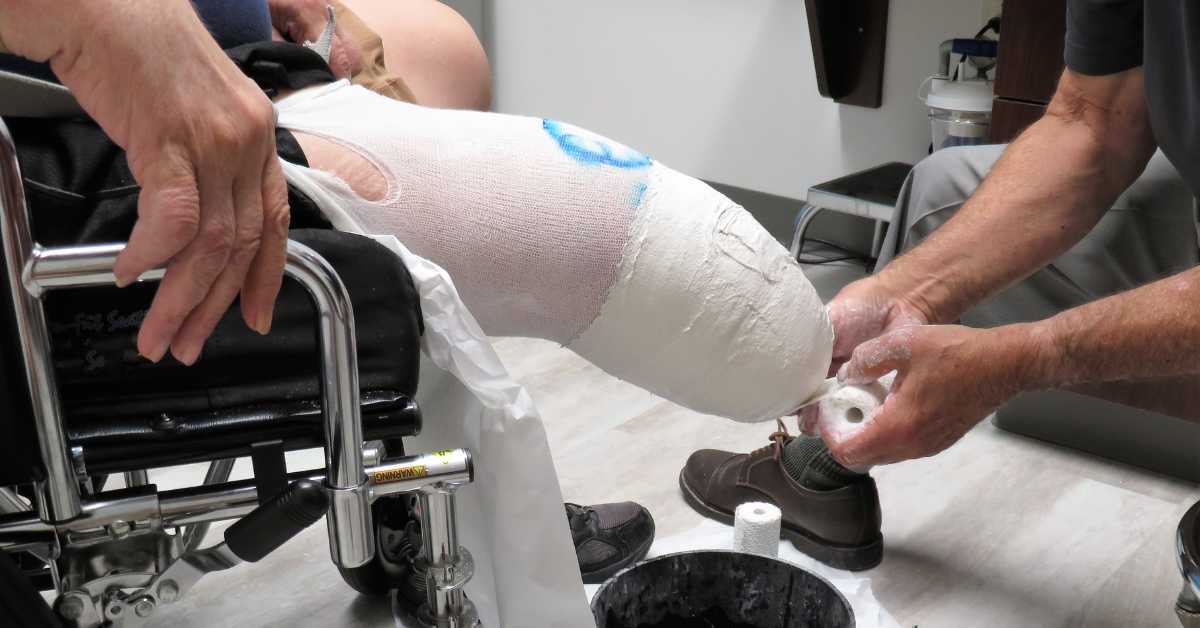Filing for SSD for an Amputation

Dayes Law Firm discusses the official impairment listing for amputations, the medical evidence required and what to do if your impairment does not meet or equal the listing. A lawyer from our firm is prepared to review your situation and determine your eligibility for disability benefits during a free consultation. There is no obligation after this meeting to retain our services, but if you do, we charge no upfront fees.
Social Security’s Official Listing for Amputations
To qualify for disability under the Social Security Administration’s (SSA) listing for amputations, you must meet one of the following criteria:
- Amputation of both hands
- Amputation or one or both legs at or above the ankle that impacts your ability to walk effectively. (You must have stump complications that does not allow you to use a prosthetic device, such as a walker, cane, crutches or wheelchair).
- Amputation of one hand and one leg at or above the ankle that impacts your ability to walk effectively.
- Amputation of one leg up to the hip (hip disarticulation)
- Pelvic amputation (hemipelvectomy)
According to the SSA, not being able to walk effectively means requiring both hands to use a cane, crutches or walker to get around and do your daily activities or go to work. If you lost an arm below the elbow and are using a prosthetic device to walk, you would be denied disability benefits.
Other Amputations That Affect Ability to Work
Many amputations unfortunately do not meet the official impairment listing. However, you may be able to qualify if your amputation has reduced your functional capacity to a certain extent that it is difficult to perform any type of work. Factors taken into consideration include your age, education and experience.
You will receive a rating based on the type of work the SSA thinks you can perform – sedentary work, light work, medium work or heavy work. This rating will be based on your amputation and restrictions issued by your treating doctor. Your rating is otherwise known as a residual functional capacity (RFC).
For instance, if you have a lower limb amputation, you may be restricted to bend, kneel or crawl or perform any other activities that require sufficient balance. An inability to stand or walk for six to eight hours a day or the use of a prosthetic device to help you walk may make you eligible for sedentary work.
For an amputation of the upper limb, the SSA will evaluate your ability to grasp items, lift objects, type or write as well as perform fine motor movements. An RFC assessment determines the type of work you may still be able to do despite limitations with your amputation.
If the SSA determines that there is no work you can be expected to perform with your RFC, there is a possibility that you may qualify for disability under a medical-vocational allowance.
Medical Evidence Needed to Qualify for Disability
You will be required to provide your medical record from your treating doctor(s) to the SSA. These records need to show detailed documentation of your amputation, your ability to use a prosthetic device and your ability to walk, rise, bend or squat.
It is also important that your doctor include the probability that your functional limitations will get better or whether your impairment is likely to not change. Being deemed disabled and obtaining disability benefits means generally proving that your impairment has lasted or is expected to last for at least one year. If you recently suffered an amputation, you must prove to the SSA that you have been unable to walk effectively for at least one year or more. Otherwise, your disability claim will likely be denied.
Presumptive Disability for an Amputation
You may be eligible to receive Social Security Disability Insurance (SSDI) or Supplemental Security Income (SSI) benefits for an amputation. SSDI is based on your work history and paying taxes on your income while SSI is a needs-based program for those with limited income and resources.
With that being said, if you apply for SSI benefits, you may be able to obtain presumptive disability payments while the SSA completes a review of your disability claim under one of these conditions:
- Two limbs were amputated
- One leg was amputated at the hip
These payments are issued right away and available for the first six months until your claim is approved or denied. Presumptive disability payments are not available to SSDI applicants.
Call Dayes Law Firm to Schedule a Free Consultation
A Phoenix-based Social Security lawyer at Dayes Law Firm is ready to help you get the disability benefits you need. We understand how difficult this time may be for you and your family. Our firm has helped many people over the years apply for disability or appeal a denied claim. We know what it takes to increase your chances of approval and are well-versed in the SSA’s rules and regulations.
Set up a free initial consultation to get started. There is no risk or obligation involved. We do not receive payment for our services unless we help obtain benefits on your behalf.
A Firm You Can Trust. Ph: 1-800-503-2000
